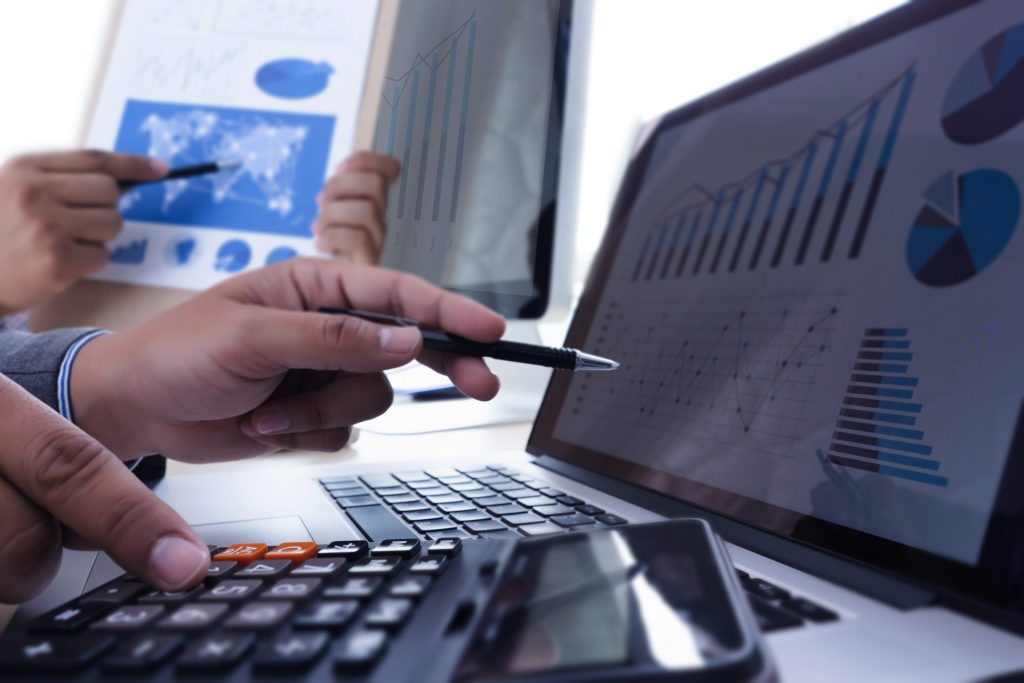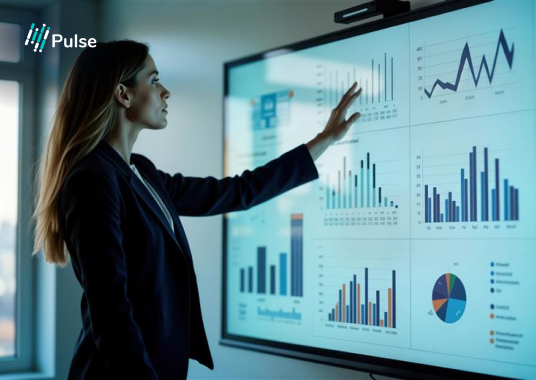The business world has become both digital and highly competitive. Only the most innovative businesses stand a chance to survive, let alone grow. SMEs, start-ups, and large corporations must use every tool in their arsenal to ensure they remain relevant, competitive, and on top of their game. It is critical for a business to plan ahead, anticipate demand, manage cash flow, and ensure that their business is equipped for unplanned eventualities.
Predictive insights are one of the most powerful and underrated tools to help achieve this. What are predictive insights, how do they work, and what is their role in financial stability? Read ahead to find out.
Predictive Insights Explained
Predictive insights are based on the use of sophisticated analytics, machine learning, and data mining methods to forecast future results. These results are grounded on historical data, trends, and patterns. In the context of financial stability, predictive insights are generally centred around financial risks, market behaviour, and trend forecasts.
Predictive Models
Helping us forecast what lies ahead, predictive models can provide perceptive analysis of several data sources, including historical financial performance, market dynamics, consumer behaviour, and macroeconomic indicators. Forecasts of market swings, changes in credit risk, cash flow predictions, varying consumer demand, and even geopolitical events that can affect financial markets are among the numerous ways this foresight might show itself. These insights enable companies to effectively manage risk, react early, implement preventative policies, and make educated decisions.
The following is a comprehensive summary of the main predictive analytics models typically applied in the financial industry:
Regression Models
- Linear Regression:
Based on one or more independent variables, linear regression is a basic model that depicts a continuous target variable, like asset prices or income. For example, project stock returns might be based on previous price fluctuations and economic data.
- Logistic Regression:
Logistic regression predicts the probability of a binary outcome—for example, whether a borrower will default on a loan. It is quite helpful in risk control and credit scoring.
Time Series Models
A time series model is a sequence of data points arranged in time whereby time serves as the independent variable. These models are used to analyse and forecast the future.
- ARIMA (Autoregressive Integrated Moving Average):
ARIMA (Autoregressive Integrated Moving Average) models are applied to anticipate future values through past observations and trends and to identify seasonal patterns in financial time series data. Future asset values or market indexes depend on this, so it is vital.
- Generalised Autoregressive Conditional Heteroskedasticity (GARCH):
GARCH models are used to estimate volatility in financial time series data. It helps in examining market risk and pricing derivatives.
Machine Learning Models:
- Decision Trees
Decision trees classify data and generate forecasts based on a set of decision rules. They help finance departments decide on loan acceptance, client segmentation, and fraud detection.
- Random Forests
Combining several decision trees under random forests is an ensemble technique to increase accuracy and lower the overfitting risk. Predicting financial results and handling challenging datasets are two areas where random forests shine.
- Neural Networks
Inspired by the human brain, neural networks forecast with great accuracy and understand intricate patterns in data. They find utility in risk assessment and algorithmic trading, among other things.
- Support Vector Machines (SVM)
Support Vector Machines (SVM) find the ideal hyperplane by dividing it into several data classes. This approach is quite useful in classification problems, including market trend prediction or fraud transaction detection.
Natural Language Processing Models (NLP)
- Sentiment Analysis: This NLP method forecasts the sentiment of textual data, such as financial news, social media posts, or other sources. It guides public opinion-based investment decisions and helps measure market mood.
- Topic Modelling: In financial documents, such as earnings reports or SEC filings, topic modelling finds underlying themes and subjects. This enables the extraction of useful insights from enormous volumes of textual material.
Several predictive analytics models in finance provide strong tools for examining and forecasting financial trends. The specific current situation, the type of accessible data, and the intended results determine the model to be used. Using these ideas can help financial experts improve their decision-making procedures and acquire a competitive edge.
The Role of Predictive Insights in Financial Planning
Predictive insights change everything for financial planning since they let businesses and individuals confidently navigate unknown territory. Financial managers can utilise forecasts to alter their strategies. If a company expects a decline in consumer spending, it can quickly cut expenses or change prices based on predictive insights. Making financial decisions without these insights is like driving blindfolded.
Predictive Insights For Individuals
Predictive technologies provide a more realistic view of future income sources, asset values, and financial goals, thereby helping individuals with retirement planning, investment selections, and budgeting. By examining market trends, predictive analytics help people identify which assets are most likely to produce positive returns or minimise risk, enabling better investing decisions.
Predictive Analytics and Mitigation of Various Risks
Effective risk management is intrinsically related to financial stability. Your business can only remain stable if you can forecast possible threats and act early to minimise them, irrespective of their market, credit, operational, or liquidity risks. You can ensure the stability, growth, and success of your business by addressing the following risks:
1. Market Risk
Markets are unstable and shaped by various factors, from consumer attitudes to world events. Predictive insights help businesses to more accurately predict changes in the market, therefore guiding their approach to either seize opportunities or guard against approaching recessionary events. Predictive models can help a company estimate changes in interest rates, stock market behaviour, or commodities pricing, therefore impacting their strategic decisions ahead of time.
2. Credit Risk
Banks, lenders, and other financial organisations expose themselves to great risks when approving loans. Predictive analytics helps lenders evaluate loan default risk and ascertain a borrower’s creditworthiness. Remedial measures may include modifying credit rules or reducing exposure to high-risk customers. Predictive models can identify emerging patterns and potential hazards in credit portfolios using historical data on borrower behaviour, economic indicators, and even social issues.
3. Operational Risk
Operational risks—such as fraud, system failures, or cybersecurity threats—may cause financial instability and disrupt business activities. Using past data, predictive insights can help isolate operational process flaws or project hazards. Predictive models help companies reduce the possibility of these operational interruptions by including them in their risk-management plans.
4. Liquidity Risks
Financial institutions, particularly those in the banking industry, have to constantly monitor their liquidity to guarantee they can satisfy temporary needs. By allowing these organisations to predict times of low liquidity, predictive insights can help them plan measures to boost cash reserves or modify lending policies to preserve stability in times of financial crisis.
Using predictive analytics, financial institutions, and businesses can proactively identify and control several kinds of risk, avoiding unanticipated shocks that might compromise their activities or the whole economy.
How Predictive Analytics Enhance Decision-Making
Predictive insights are also integral to the decision-making process within any financial context. Decisions grounded on reliable, data-driven insights are far more successful than those based solely on intuition or prior performance. This fact holds true for individuals, lenders, and SMEs alike.
For Businesses
Predictive models can help businesses make informed decisions in supply chain management, investment possibilities, wealth management, and pricing policies. Anticipating future trends and market scenarios allows businesses to modify their operations to stay competitive and strong even in testing circumstances.
For Individuals
Predictive insights can help individuals manage future cash flow, monitor expenditure trends, or predict the performance of investment portfolios. This helps people decide which financial goals to prioritise and how to manage and grow their money effectively.
For Governments
Government agencies can also use predictive analytics to create better financial policies. Forecasting possible economic downturns, inflationary pressures, or unemployment patterns helps governments take preventative action to steady the economy. Predictive analytics also allows governments to enhance national financial planning, guaranteeing balanced budgets and effective resource allocation.
Predictive Insights in Times of Crisis
Predictive insights become even more important during financial crises, such as the 2008 global financial crisis or the effects of the COVID-19 epidemic. Forecasting the ripple effects of economic shocks will enable one to guarantee financial resilience and help stabilise markets in these times of uncertainty.
Rather than waiting to act when emergencies arise, businesses can consider subscribing to Pulse, an intuitive and comprehensive platform that offers various tools, features, and modules meant to empower SMEs to grow, expand, and flourish. From KPI tracking and trend analysis to our latest accounts receivable module, DebtorIQ, Pulse can give businesses the ability to monitor financial health, leverage real-time data analytics, and make informed data-driven decisions. If you’d like to take your business to the next level, contact Pulse today.
Predictive models let governments evaluate the possible long-term effects of such crises, therefore guiding their formulation of better recovery plans. In a similar vein, companies may negotiate difficult economic times by seeing new hazards and modifying their plans using predictive analytics.
Conclusion
Maintaining financial stability in a growing, more complicated, and chaotic society rests solely on predictive insights. Through the use of advanced analytics, machine learning, and data-driven forecasting, businesses, financial institutions, and governments may better project risks, direct policies, and steer actions.
Predictive insights provide a competitive edge that steadily advances long-term financial stability. This improvement could mean improving financial planning, controlling risk, or strengthening decision-making. Forecasting and future preparation are not simply luxuries but essential to attaining continued stability and growth.

















